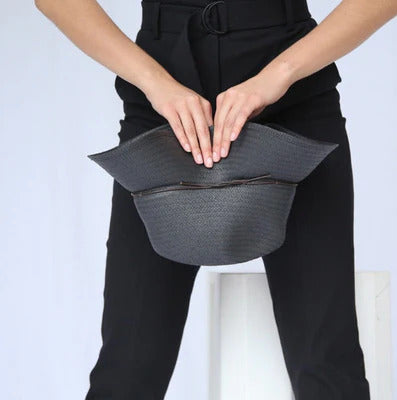
Best Hat Materials for Sun Safety
Choosing the right hat is more than just finding one that looks good. It’s also about protecting yourself from the sun's harmful rays. While many people know that hats can help with sun safety, not everyone understands how important the material of the hat can be. Different materials offer varying levels of protection against UV rays, and the right choice can make a significant difference in your overall sun safety.
Understanding UV protection in hat materials is crucial. Some materials block UV rays more effectively than others. Knowing which materials offer the best coverage can help you make an informed decision. Additionally, hats come with UPF (Ultraviolet Protection Factor) ratings that tell you how well the fabric blocks UV radiation. A higher UPF rating means better protection, so it's important to pay attention to these numbers when shopping for a new hat.
But the choice doesn’t end there. You also have to decide between natural and synthetic materials. Each type has its own set of pros and cons. Natural materials like cotton and straw are breathable and comfortable, while synthetic materials often offer superior UV protection and durability. Picking the right material depends on your specific needs and the activities you'll be doing while wearing the hat. Understanding these factors can help you choose the best hat for both fashion and function.
Understanding UV Protection in Hat Materials
How Different Materials Block UV Rays
Different hat materials offer varying levels of protection against UV rays. Natural fibers like cotton and straw are popular choices due to their breathability. However, they tend to provide less UV protection compared to synthetic materials. Cotton hats usually have a loose weave that allows some UV rays to penetrate. Straw hats, while stylish, can also have gaps that let sunlight through unless they're tightly woven.
Conversely, synthetic materials such as polyester and nylon are often treated to provide better UV protection. These materials are usually woven tightly, blocking more UV rays from reaching your skin. Some synthetic hats even come with special UV-blocking coatings that enhance their protective qualities. Understanding these differences can help you choose a hat that offers the best sun protection for your needs.
Importance of UPF Ratings
UPF (Ultraviolet Protection Factor) ratings indicate how well a fabric blocks UV radiation. A higher UPF rating means better protection. For example, a hat with a UPF rating of 50 allows just 1/50th of the sun’s UV rays to pass through. Hats with a UPF rating of 30 or higher are considered good for sun protection.
When shopping for a sun-safe hat, look for those with high UPF ratings. Many hats will have this rating listed on their tags. A higher UPF-rated hat can give you peace of mind, knowing you're well-protected from harmful UV rays. This makes UPF ratings an essential factor in choosing the best hat material for sun safety.
Natural vs. Synthetic Materials for Sun Safety
Pros and Cons of Natural Materials
Natural materials like cotton, straw, and hemp are popular for their breathability and comfort. Cotton hats are soft and lightweight, making them easy to wear for extended periods. Straw hats are stylish and provide excellent ventilation, keeping your head cool. Hemp is durable and environmentally friendly, a great choice for eco-conscious consumers.
However, these materials have their downsides. Cotton and straw hats usually have a looser weave, allowing more UV rays to penetrate. They may also wear out faster, especially if frequently exposed to the sun. Natural materials can absorb sweat and moisture, which might lead to discomfort on hot days. Knowing these pros and cons helps you weigh your options better.
Benefits of Synthetic Materials
Synthetic materials like polyester and nylon offer several advantages when it comes to sun safety. These fabrics are often tightly woven, providing better UV protection. They are durable and can withstand harsh sun exposure without degrading as quickly as natural materials. Some also have moisture-wicking properties, keeping you dry and comfortable.
Another benefit is that synthetic materials are often treated with UV-blocking chemicals, enhancing their protective abilities. These hats can be ideal for intense outdoor activities, offering both protection and durability. While they may not be as breathable as natural options, the enhanced sun protection they provide makes them a robust choice for outdoor enthusiasts.
By understanding both natural and synthetic materials, you can make an informed decision about which type of hat best fits your needs for sun safety.
Choosing the Right Material for Your Activity
Best Materials for Outdoor Activities
When selecting a hat for outdoor activities, such as hiking, fishing, or beach outings, the material plays a crucial role. Synthetic fabrics like polyester and nylon are excellent choices for these activities. They are durable, lightweight, and often come with moisture-wicking properties. These features help keep you cool and dry, even in the heat.
Nylon hats with water-resistant coatings are ideal for wet conditions or water-based activities. For intense sun exposure, look for hats with a high UPF rating to ensure maximum UV protection. Mesh panels in the hat can improve airflow, preventing your head from overheating. These materials are practical and designed to withstand rigorous outdoor use, making them the best choice for active lifestyles.
Ideal Materials for Casual and Formal Wear
For casual days or formal events, natural materials like cotton, straw, and wool are excellent choices. Cotton hats are soft, comfortable, and breathable, making them perfect for daily wear. Straw hats are stylish and offer good air circulation, making them suitable for warm weather and casual gatherings.
Wool hats are fantastic for cooler weather, providing warmth while still offering some sun protection. These materials often come in a variety of styles and colors, allowing you to match your hat with different outfits. For formal occasions, felt or wool hats can add a touch of sophistication to your ensemble. These materials offer a balance of comfort, style, and sun protection, making them ideal for both casual and formal settings.
Caring for Your Sun-Safe Hat
Maintenance Tips for Longevity
Taking care of your hat can extend its lifespan and keep it looking good. First, always store your hat in a cool, dry place. Avoid leaving it in direct sunlight for extended periods, as this can cause the material to fade and weaken. When not in use, placing your hat on a hat rack or stuffing it with tissue paper can help it maintain its shape.
It's also important to handle your hat with clean hands to avoid transferring oils and dirt onto the fabric. For hats with brims, avoid bending or folding them, as this can cause permanent damage. Regular care and proper storage can ensure your hat stays in great condition for years.
Cleaning Techniques for Different Materials
Cleaning your hat properly depends on its material. For cotton and synthetic hats, a gentle hand wash with mild soap and cool water works well. Avoid using hot water, as it can shrink the fabric. Gently scrub any stains using a soft brush or cloth, then rinse thoroughly and let it air dry.
Straw hats should be wiped down with a damp cloth to remove dust and dirt. Avoid soaking them in water, as this can weaken the straw and cause it to lose shape. Wool and felt hats can be spot-cleaned with a damp cloth or taken to a professional cleaner for a more thorough cleaning. By following these cleaning techniques, you can keep your sun-safe hat looking fresh and well-maintained.
Conclusion
Choosing the right material for your hat is crucial for effective sun protection, comfort, and style. By understanding how different materials block UV rays and the importance of UPF ratings, you can make an informed decision that best suits your needs. Natural and synthetic materials each have their pros and cons, making them suitable for various activities and occasions.
Caring for your hat properly ensures it stays in great condition, providing you with long-lasting sun protection. Regular maintenance and correct cleaning methods can keep your hat looking as good as new. Remember, a well-chosen and well-maintained hat can be both a fashionable accessory and a practical tool for sun safety.
Explore the wide range of sun-safe hats at KIN THE LABEL to find the perfect balance of style and protection for your needs. Discover how our carefully crafted hats can enhance your wardrobe while keeping you safe from harmful UV rays. Check out this packable sun hat!



